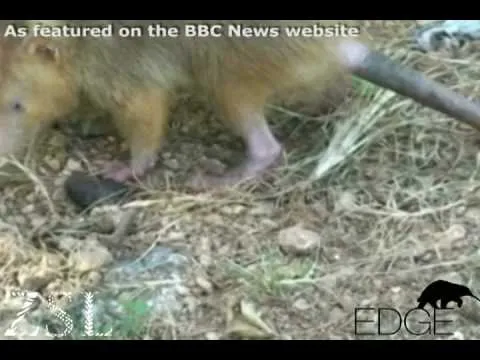
solenodon is the only venomous mammal species of the Solenodontidae family. They are nocturnal animals that live in burrows and insectivores. And they are mammals that have a primitive character that supposedly this species already existed at the end of the dinosaur era. Solenodon is one of two species of the Caribbean soricomorphs family. It remains unclear whether the extinct Nesophontidae family during the Holocene had a close relationship with Solenodon or not.
There are two species of Solenodon still alive today: Cuban solenodon (Solenodon cubanus), and Haitian Solenodon or Hispaniolan solenodon (Solenodon paradoxus). Two other species of Solenodon have become extinct during the Quarternary period. Appearance Solenodon resembles a very large mouse figure. Its long muzzle is flexible, and on Haitian Solenodon there is a ball-and-socket joint at the bottom of them to improve mobility. This allows them to pinpoint the narrow gaps where their prey usually hides.
Solenodon body length about 28 to 32 cm measured from the tip of the nose to the buttocks. Solenodon's weight is about 0.7 to 1 kg. These rare animals are very easily agitated, so they are prone to bite even with minimal and unintentional interference. Solenodon has some pretty interesting properties, two of which are the nipples on the female Solenodon's position very close to the buttocks, and the solenodon saliva that comes out of the two canines is poisoned.
Symptoms resulting from exposure to Solenodon toxins include depresei, difficulty breathing, convulsions, and paralysis. Even in a test using mice, if exposed to large amounts of Solenodon toxins can lead to the death of a mouse.
Solenodon's main food is insects, earthworms, and some invertebrates. They also eat vertebrate carcasses, and some have prey on living vertebrates like small reptiles, and amphibians. Solenodon has a good sense of smell that he uses to find his prey. After finding the prey, Solenodon will use both front legs to turn off the left-right step of the prey, then move his head to prey on the prey. Solenodon also has sharp claws that will help him in the hunt for prey.
Solenodon gave birth to his son in the nest. Usually in one birth they will give birth to one or two chicks. Solenodon seedlings will be with their mothers for about 7 months, and they will usually hang on their long nipples. And as adults, Solenodon is a solitary animal, they rarely communicate with anyone except to mate.
Both species of Solenodon are now in an endangered status due to being preyed on by weasels, especially the Herpestes javanicus auropunctatus type cats that were colonial trained to hunt snakes and rats like cats and dogs. Cuban solenodon was considered extinct, before in 2003 found their species are still alive. Hispaniolan solenodon was also declared extinct because of their very few populations, as well as their behavior that is still not very understood.
Human development in Cuba and Hispanola also worsened the Solenodon population. Their habitat also affected the narrowing of the spread, and the reduced population. This animal became one of the animals that are very rare. For more details, see this animal video on Youtube below.
